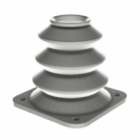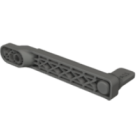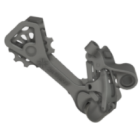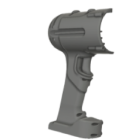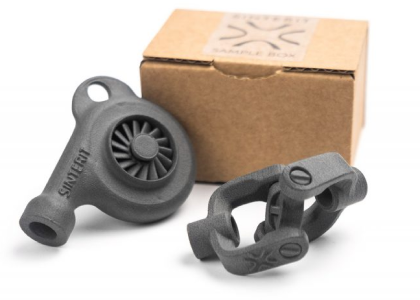Application of 3D printing in industry
Over the past decade, additive manufacturing has evolved from a prototyping tool into a fully integrated part of modern production systems. The application of 3D printing in industry now spans across sectors like aerospace, automotive, medical, and tooling — not as an experimental alternative, but as a strategic, production-grade solution. From accelerating product development to enabling complex geometries and localized production, 3D printing is reshaping the way manufacturers design, build, and iterate.
How 3D printing is used in industrial manufacturing
The core value of 3D printing in industrial manufacturing lies in its flexibility. Unlike traditional subtractive or formative methods, additive manufacturing builds parts layer by layer directly from digital files, eliminating the need for molds, dies, or tooling. This on-demand capability is especially useful in scenarios where time-to-market, customization, or design complexity outweigh the need for mass production scale.
In many facilities, the use of 3D printing in manufacturing begins at the prototyping stage. It allows engineers to quickly produce physical models of parts, test fit and function, and iterate in hours instead of weeks. But its influence doesn’t end there. Increasingly, manufacturers are integrating 3D printing into low-volume production, bridge manufacturing, and even the creation of end-use parts — components that go directly into finished products, ready for functional deployment.
The production of end-use parts using 3D printing has become one of the clearest indicators that the technology is no longer limited to development labs. These parts are used not just in proof-of-concept builds but in certified applications where strength, tolerance, and reliability are critical — from aerospace brackets and electrical housings to medical devices and final consumer goods.
Core applications of industrial 3D printing
Today, 3D printing supports a broad range of industrial applications, each leveraging a different strength of the technology. While the full scope is extensive, several areas have emerged as core pillars of 3D parts manufacturing:
- functional prototyping: high-fidelity prototypes with near-final material properties support real-world testing and validation before tooling investment,
- tooling & fixtures: custom jigs, clamps, assembly aids, and inspection tools can be produced quickly and cost-effectively, tailored to exact operational needs,
- spare parts and on-demand components: legacy or low-turnover components can be produced on-site or on-demand, reducing inventory and lead time,
- production parts: in certain industries, especially aerospace and medical, 3D printed end-use parts are approved for flight or clinical use — offering unmatched design freedom, weight optimization, and digital production agility,
- mass customization: when geometry varies from unit to unit, such as in dental implants or orthopedic supports, additive manufacturing becomes the most efficient route to production.
These 3D printing in manufacturing examples are no longer experimental or limited to niche players. Large OEMs, contract manufacturers, and Tier 1 suppliers are all investing heavily in additive workflows — not only for agility but also for performance and long-term cost efficiency.
Materials and 3D printing technologies used in manufacturing
The viability of 3D in manufacturing has grown dramatically thanks to advances in materials and machine capabilities. Engineering polymers such as PA12, PEKK, and reinforced nylons are enabling stronger, more durable components. Metal additive manufacturing — via DMLS or SLM — is now producing complex titanium, stainless steel, and Inconel parts that meet aerospace-grade certification standards.
Powder-bed fusion systems like SLS and MJF offer robust, repeatable processes ideal for both prototyping and short-run production, while extrusion-based platforms continue to evolve with high-strength composites and multi-material functionality. Resin-based methods (e.g. DLP or SLA) remain popular for tooling, casting patterns, and fine-detail parts, but are also finding their way into end-use applications, especially when high precision and surface quality are priorities.
This growing material diversity is critical to expanding the reach of 3D printing from conceptual work toward production-ready solutions. The ability to choose a technology and material based on the final function of the part — rather than adapting the part to the limits of the process — is key to unlocking industrial adoption.
Advantages of using 3D printing in industrial production
The industrial adoption of additive manufacturing isn’t just about innovation — it’s often driven by measurable business outcomes. The benefits of 3D manufacturing include:
- reduced lead times, especially during product development or supply chain disruption,
- lower tooling and inventory costs, thanks to on-demand, digital-first production,
- greater design flexibility, supporting part consolidation and functional optimization,
- localized production, which reduces logistics dependency and shipping complexity,
- sustainable production models, through material efficiency and minimized waste,
- on-demand end-use parts, produced without minimum order quantities or long tooling lead times.
The shift toward printing final components directly — rather than using additive methods solely for prototyping or tooling — is accelerating. In many industries, 3D printed end-use parts are already considered a viable alternative to injection molded or machined parts, particularly when the need for customization, speed, or design freedom outweighs the economics of scale.
Summary: 3D printing in industry as a production-ready solution
The application of 3D printing in industry is no longer theoretical — it’s strategic. From prototyping and tooling to full-scale production and digital spare parts, 3D printing has embedded itself across manufacturing environments. One of the most transformative developments is the shift toward additively manufactured end-use parts, which are redefining expectations for speed, cost, and design capability. As machine performance improves and materials continue to diversify, additive manufacturing is no longer just an enabler — it’s a viable production technology, capable of delivering final parts directly, on demand, and without compromise.
Explore also
- 3D printed prototype
- 3D printing in medical industry
- 3D printing for dental applications
- Application of 3D printing in architecture
- 3D automotive: additive manufacturing in car production
- Aerospace additive manufacturing
- 3D printing in civil engineering
- 3D printing in education
Related categories




